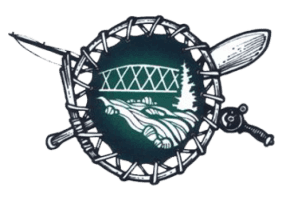OCTOBER UPDATE: What Can You Spot on Our Trails This Fall?
Fall is in full swing here in Sioux Narrows – Nestor Falls. The trails glow with gold amber and crimson leaves in every direction. These cooler temperatures and crisp mornings make it the perfect time to slow down and notice nature preparing for winter.
Wildlife to watch for on the trails.
As wildlife begins its autumn rhythms, here are a few animal behaviors and signs you can keep an eye out for when you head out on your next fall walk.
Moose & Deer- These animals are most active at dawn and dusk. Look for signs like tracks and droppings. Trees missing bark may be a good indicator deer are nearby. They rub on them to remove velvet from their antlers, leave a scent trail, communicate with other animals and more. Always give them plenty of space. Consider binoculars for a closer look. Bull moose may become more aggressive in fall, as it is prime mating season.
Migratory Songbirds- Many birds are on the move so keep your eyes up, and ears open for warblers, sparrows, and thrushes passing through. Choose trails with diverse habitats like native grasses, shrubs and trees bearing wild berries and seeds. They tend to hang out near water edges, and areas with thickets are excellent places to spot migratory songbirds.
Otters, Beavers and Minks- Look near water for five toed prints: Otters show a rear pad, beavers’ are larger and minks make smaller star like prints. Droppings are often found at ‘latrines’ (scent mounds) Chewed trees, scent mounds, and dams are other signs to look for. Best time to spot them is at dawn and dusk.
Black bears- In hyperphagia bears eat up to 20 hours a day to bulk up for hibernation. They forage food like berries, roots, and other plants, often near water sources or along paths of least resistance. Stay safe: hikers should make noise to alert bears of their presence, travel in groups, and keep dogs leashed. Signs of a bear in the area are seeing prints, often with visible claws. Fresh Scat. Overturned rocks/logs, or caches. Bears also mark trees by clawing or rubbing against them, sometimes leaving behind hair, especially on trees with exposed sticky sap. Be Prepared: Know how to react if you encounter a bear.
Why it matters.
This transition is one of the most dynamic ecosystem shifts. Food sources are changing, and species are preparing for their long migration to warmer regions, or for their hibernation through the long cold winter months ahead. These trails are not only beautiful paths to explore but living examples of nature adapting to change.
Don’t forget - tread lightly. Stay on marked trails.
Respect the wildlife by keeping your distance.
Avoid damaging plants. Leave no trace behind.
Head over to our Facebook page “Sioux Narrows-Nestor Falls Trails” and let us know if you see any downed trees and share with us your experience. We want to hear from you!
